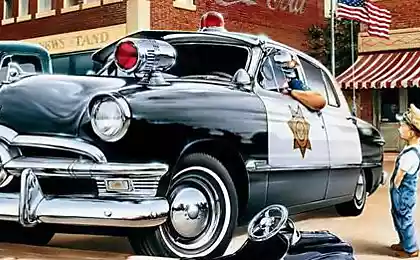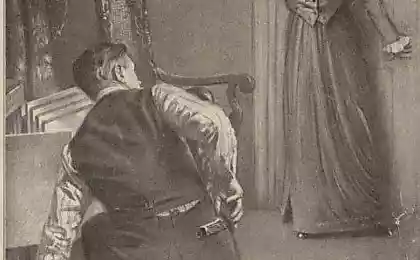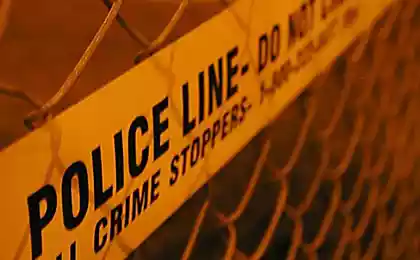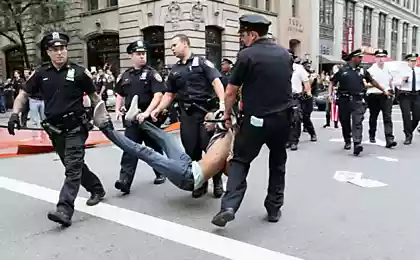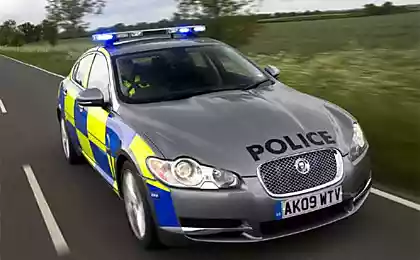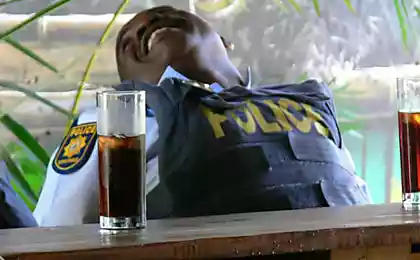832
Police swimsuits in America
At the beginning of the 20th century women's bathing suits were quite bulky, high-necked, long-sleeved shirt, trousers and skirts. Often they were made of wool.
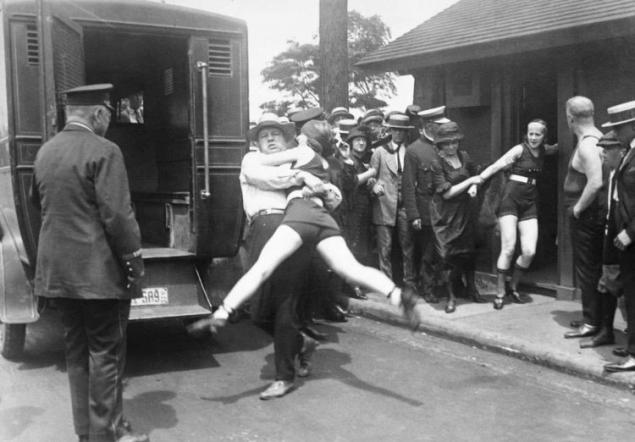
When the women started on slightly denude previously closed areas of the body, many US states have imposed restrictions governing the appearance of swimwear, particularly the length of the skirt. For their implementation is strictly monitored by the police. I do not stay on the sidelines and the public.
1921. Chicago police checks are not broken any law regulating the wearing bathing suits.

So, for example, in 1919 in New York, were sworn in 20 special «Sheriffettes», whose main task was to control the swimwear holidaymakers on the beach Rockaway Beach in Queens, New York. In the same year, the police received a reprimand from the judge for the arrest of a woman who was wearing a swimsuit under her skirt and sweater. While walking with her husband along Ocean Parkway with her husband she was ordered to go home and change into proper clothing. Police alleged the woman looked under her skirt to check what she was wearing. The judge rejected the accusation and said that police did not have any grounds for such action.
April 1922. Chicago, Illinois. Two Bathers, accompanied by a female police officer.
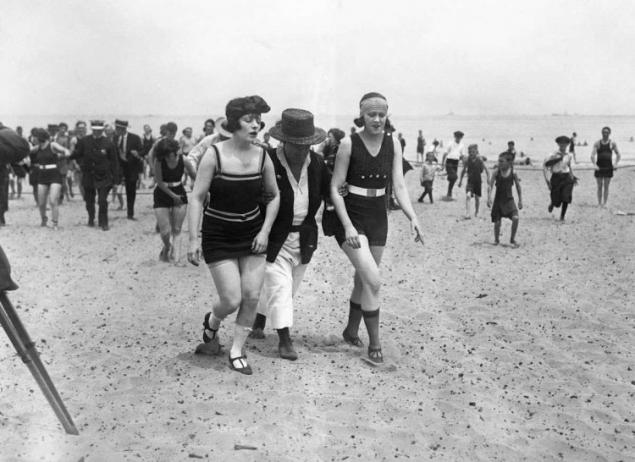
In 1921, in Atlantic City, New Jersey, was arrested bathers, nosivshuyu stockings below the knee and refused to pull them up during the arrest she was in retaliation struck the officer in the eye. In 1921, Hawaii passed a law prohibiting all persons over 14 years of appearance in bathing suits that do not cover the body to the knees. In response, the women began to wear a towel around his waist and wrapped his cloak.
1925. "Smokey" Buchanan of Police West Palm Beach measures swimsuit Betty Fringl to Palm Beach, to make sure it complies with current regulations on the beach.
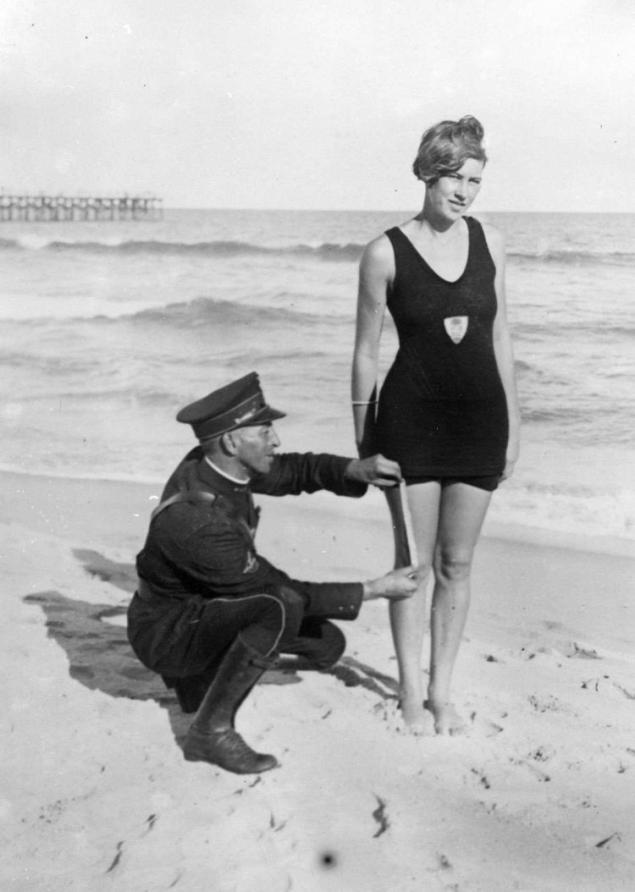
It was only with the beginning of the 1930s, women in the US were able to finally get rid of the clumsy swimsuits past in favor of something more practical. But the echoes of past prohibitions existed for decades, as seen in this photo taken at the police station in 1941.
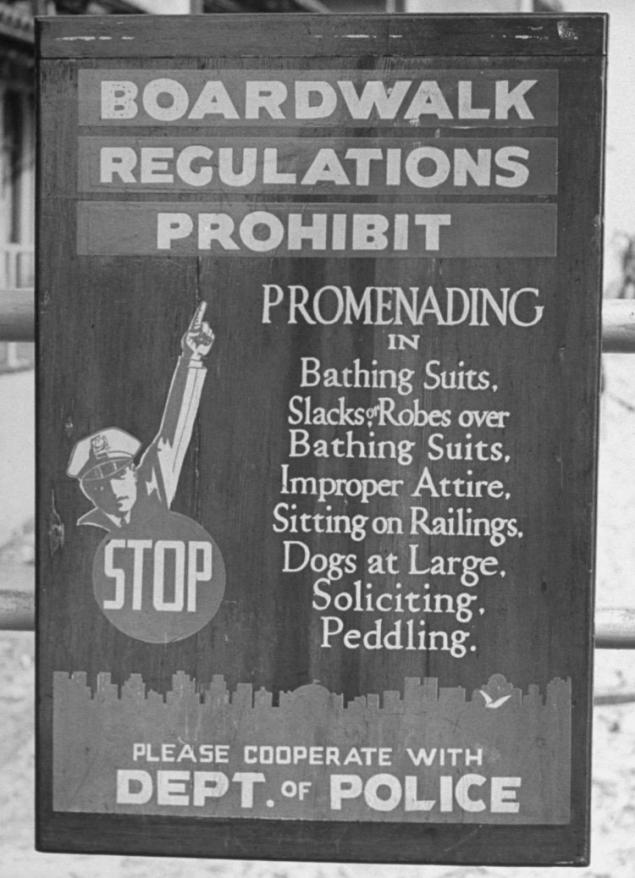

When the women started on slightly denude previously closed areas of the body, many US states have imposed restrictions governing the appearance of swimwear, particularly the length of the skirt. For their implementation is strictly monitored by the police. I do not stay on the sidelines and the public.
1921. Chicago police checks are not broken any law regulating the wearing bathing suits.

So, for example, in 1919 in New York, were sworn in 20 special «Sheriffettes», whose main task was to control the swimwear holidaymakers on the beach Rockaway Beach in Queens, New York. In the same year, the police received a reprimand from the judge for the arrest of a woman who was wearing a swimsuit under her skirt and sweater. While walking with her husband along Ocean Parkway with her husband she was ordered to go home and change into proper clothing. Police alleged the woman looked under her skirt to check what she was wearing. The judge rejected the accusation and said that police did not have any grounds for such action.
April 1922. Chicago, Illinois. Two Bathers, accompanied by a female police officer.

In 1921, in Atlantic City, New Jersey, was arrested bathers, nosivshuyu stockings below the knee and refused to pull them up during the arrest she was in retaliation struck the officer in the eye. In 1921, Hawaii passed a law prohibiting all persons over 14 years of appearance in bathing suits that do not cover the body to the knees. In response, the women began to wear a towel around his waist and wrapped his cloak.
1925. "Smokey" Buchanan of Police West Palm Beach measures swimsuit Betty Fringl to Palm Beach, to make sure it complies with current regulations on the beach.

It was only with the beginning of the 1930s, women in the US were able to finally get rid of the clumsy swimsuits past in favor of something more practical. But the echoes of past prohibitions existed for decades, as seen in this photo taken at the police station in 1941.







